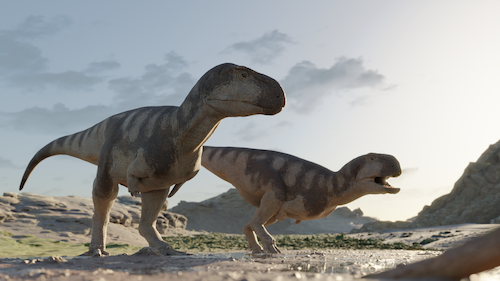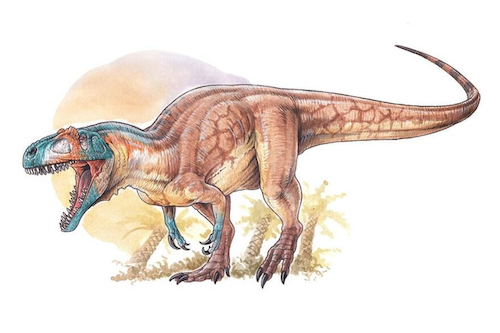JurRad - Unravelling the jurassic radiation of Averostra (Dinosauria, Theropoda)
Unravelling the jurassic radiation of Averostra (Dinosauria, Theropoda) from new data of its most complete Argentinian early representatives and exhaustive phylogenetic analyses („JurRad“).
The Marie S. Curie Actions Project “JurRad” of Dr. Elena Cuesta is focusing on the evolution of major group of theropod dinosaurs: Averostra. However, despite being one of the most studied groups, it is also one of the most debated within theropods due to the unclear phylogenetical interrelationship of its ‘basal’ members and the relationships between their major clades. Averostra radiated explosively from the Early to Late Jurassic (from 182.7-145 million years), with the Pliensbachian-Toarcian extinction event (182 million years ago) probably being one of the major causes for this explosive evolution. The increase in rate of morphological change that followed the extinction, together with the fragmentary nature of the fossil record of the ‘basal’ members could be the cause of the difficulties to unravel the interrelationships among Averostra. The main goal of this research is to obtain a robust and synthetic view of the evolutionary drivers of this radiation of Averostra during the Jurassic, to explore when averostrans originated at the latest and unravel the impact of the previous extinction on their radiation and how the different lineages were established in the aftermath. For achieve this goal, it will carry out phylogenetical analyses of this group, the subsequent assessment of the morphological changes within a phylogenetic context in the early evolution of Averostra and the evaluation of its connection with the Pliensbachian-Toarcian extinction event and consequent radiation of theropods. Moreover, it will be study in detail the most complete early members of the two main averostran lineages, Eoabelisaurus mefi and Asfaltovenator vialidadi (Early Jurassic species) from the Patagonia of Argentina (Chubut province). These taxa are exceptionally complete and show unique character combinations, which will be essential for unravelling the role of the radiation in the early diversification of Averostra. This project is being executed between an outgoing phase at Museo Paleontológico Egidio Feruglio (Trelew, Argentina) and the GeoBio-Center (LMU, München).
The project is led by Dr. Elena Cuesta and hosted by Prof. Oliver Rauhut and Dr. Diego Pol.

Image: Reconstruction of two individuals of Eoabelisaurus, a ceratosaur from Fm. Cañadón Asfalto in Chubut (Patagonia, Argentina) by Gabriel Díaz Yantén (@paleogdy). One of the theropod in study in this Project

Image: Illustration of Asfaltovenator, a possible allosauroid from Fm. Cañadón Asfalto in Chubut (Patagonia, Argentina) by Gabriel Lio. One of the theropod in study in this Project.

